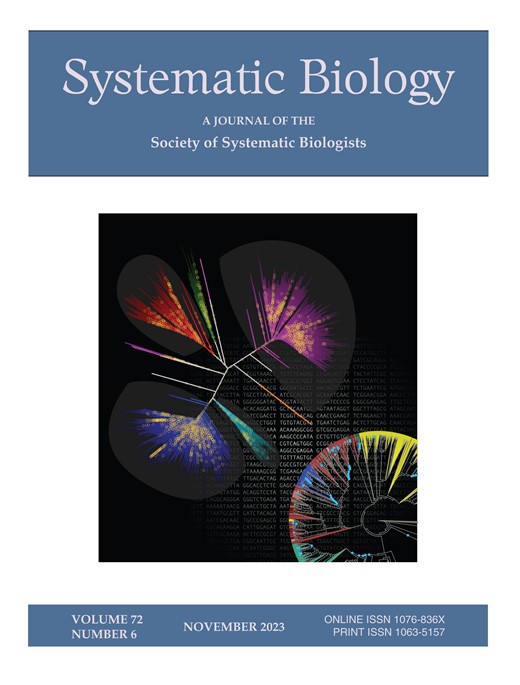博物馆基因组学揭示了一种已灭绝的火山口湖特有物种的杂交起源
IF 6.1
1区 生物学
Q1 EVOLUTIONARY BIOLOGY
引用次数: 0
摘要
火山口湖鱼类是常见的进化模式系统,最近的研究表明,基因流在促进快速适应和物种分化方面发挥着关键作用。然而,对这些年轻湖泊的研究可能会因人类造成的物种灭绝而变得复杂。因此,整合近期灭绝物种遗传数据的博物馆基因组学方法对于了解这些脆弱系统的复杂进化历史至关重要。在这里,我们研究了已灭绝的南半球火山口湖特有物种--彩虹鱼(Melanotaenia eachamensis)的进化史。我们对澳大利亚阿瑟顿高原(Atherton Tablelands)现存的彩虹鱼种群以及博物馆的历史资料进行了全面取样,以了解已灭绝的火山口湖种群的进化起源以及跨生态区的基因流动动态。已灭绝的火山口湖物种在基因上有别于附近的所有其他种群,这是由于两个相近的河系之间的历史性引种造成的,这与其他著名的火山口湖物种系统类似,但这种历史性基因流动还不足以导致物种群的形成。我们的研究结果表明,博物馆基因组学方法可以成功地与现存取样相结合,以揭示涉及近期灭绝物种的复杂物种演化动态。本文章由计算机程序翻译,如有差异,请以英文原文为准。
Museum genomics reveals the hybrid origin of an extinct crater lake endemic
Crater lake fishes are common evolutionary model systems, with recent studies suggesting a key role for gene flow in promoting rapid adaptation and speciation. However, the study of these young lakes can be complicated by human-mediated extinctions. Museum genomics approaches integrating genetic data from recently extinct species are therefore critical to understanding the complex evolutionary histories of these fragile systems. Here, we examine the evolutionary history of an extinct Southern Hemisphere crater lake endemic, the rainbowfish Melanotaenia eachamensis. We undertook comprehensive sampling of extant rainbowfish populations of the Atherton Tablelands of Australia alongside historical museum material to understand the evolutionary origins of the extinct crater lake population and the dynamics of gene flow across the ecoregion. The extinct crater lake species is genetically distinct from all other nearby populations due to historic introgression between two proximate riverine lineages, similar to other prominent crater lake speciation systems, but this historic gene flow has not been sufficient to induce a species flock. Our results suggest that museum genomics approaches can be successfully combined with extant sampling to unravel complex speciation dynamics involving recently extinct species.
求助全文
通过发布文献求助,成功后即可免费获取论文全文。
去求助
来源期刊

Systematic Biology
生物-进化生物学
CiteScore
13.00
自引率
7.70%
发文量
70
审稿时长
6-12 weeks
期刊介绍:
Systematic Biology is the bimonthly journal of the Society of Systematic Biologists. Papers for the journal are original contributions to the theory, principles, and methods of systematics as well as phylogeny, evolution, morphology, biogeography, paleontology, genetics, and the classification of all living things. A Points of View section offers a forum for discussion, while book reviews and announcements of general interest are also featured.
 求助内容:
求助内容: 应助结果提醒方式:
应助结果提醒方式:


